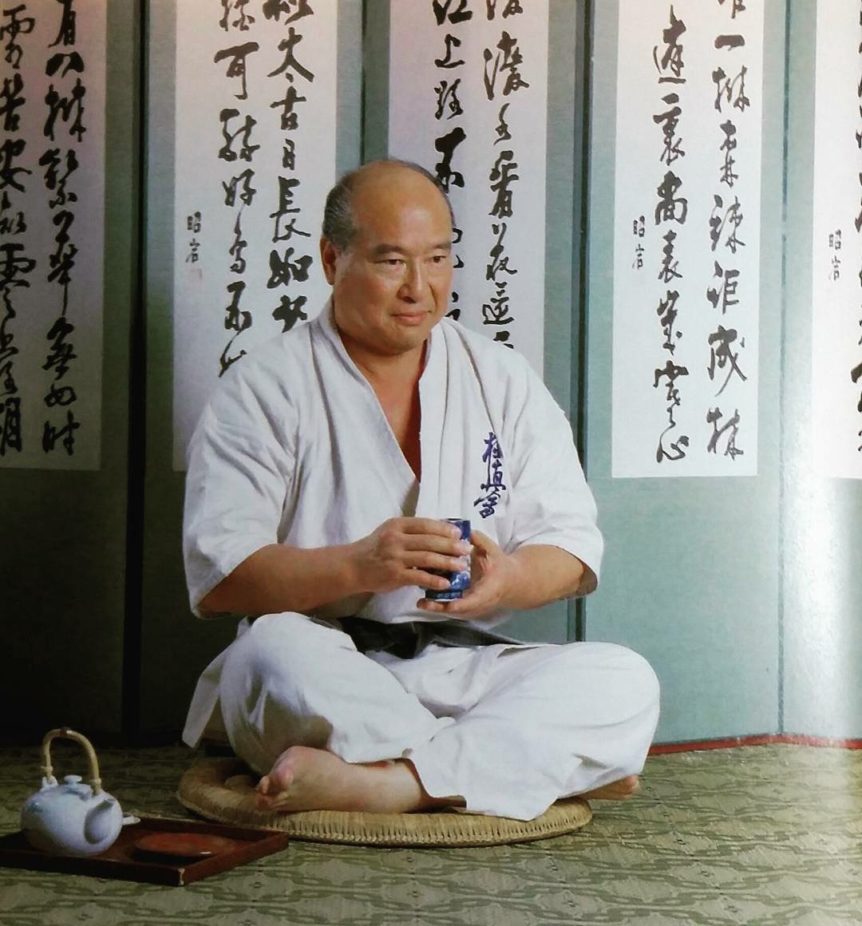礼に始まり礼に終わる
There is a phrase in Japanese martial way (Budo) 礼に始まり礼に終わる (Rei ni hajimari, rei ni owaru). “Begin with rei, and end with rei”.
Most are familiar with Rei and it’s meaning of “bow”. However, this is not the exact translation. The Kenkyusha Online Dictionary gives the following meaning, “etiquette; decorum; propriety; politeness; courtesy; civility”.
The definition below is from the Kenkyusha Online Dictionary.
| れい2【礼】 (rei) | |
| 1 〔礼儀〕 etiquette; decorum; propriety; politeness; courtesy; civility. [=れいぎ(さほう)]
2 〔おじぎ〕 a salutation; a salute; a bow; an obeisance; 3 〔儀式〕 a ceremony; a rite. 4 〔謝辞〕 thanks; gratitude; acknowledgment; appreciation. |
|
This would give us the translation “Begin with courtesy and end with courtesy.”
The spirit of Rei, along with Osu!, is one of the fundamental aspects when learning Kyokushin Karate, and many other styles of traditional Karate and Japanese martial arts (Bujutsu).
More than just a way for people to greet each other, the spirit of Rei serves as a system of courtesy, and Reihō – 礼法 (Etiquette) are the protocols that represent it.
In the Dojo, the spirit of Rei is afforded great significance, and the emphasis is on the importance of Reihō (etiquette) as a representation of this spirit.
 In Kyokushin Kumite practice or competition, fighters look to defeat each other as they engage in combat. If the spirit of Rei is lost, the encounter descends into violence, or a fight, and the possibility to learn anything of any value deteriorates.
In Kyokushin Kumite practice or competition, fighters look to defeat each other as they engage in combat. If the spirit of Rei is lost, the encounter descends into violence, or a fight, and the possibility to learn anything of any value deteriorates.
However, Kyokushin bouts provide an important opportunity for forging one’s mind and body through keeping calm and reflecting on the spirit of Rei to maintain self-control and respect to your opponent.
As mention, Reihō, otherwise known as Etiquette, is the physical manifestation of the spirit of Rei. Zarei (seated bow) and Ritsurei (standing bow) are taught in the dojo. These two types of Reiho are the focus of instruction, but they are not everything.
As Reiho is the method of expressing the spirit of Rei, it is important to understand that this spirit must not be lacking, notwithstanding of the situation, time, or way it is expressed.
When interacting with others, one judges the situation and acts in a specific way. You must ask yourself whether you are truly representing the Bushido ideal and the spirit of Rei. The point being, there is a difference between merely complying with the forms of Reiho, and performing it the true spirit that underlies it.
The importance of courtesy in Budo
Posted by Yoshin Project on Monday, April 23, 2018
After every bow, reflect on the spirit with which it was executed. Not just passively going through the motions. Rather strive to do correct and polite Rei, teeming with sincerity.
The Rei at the end of practice is an expression of gratitude: “Thank you for being my partner.”
Rei performed in the dojo, it can be said, should be observed at all times in order to enact the spirit of mutual benefit in one’s everyday life.
 At the beginning of class, while sitting in Seiza (正座 or 正坐) – [say za] literally means “proper sitting” and is the Japanese term for one of the traditional formal ways of kneeling in Japan. The students and teacher will bow to each other in a similar fashion.
At the beginning of class, while sitting in Seiza (正座 or 正坐) – [say za] literally means “proper sitting” and is the Japanese term for one of the traditional formal ways of kneeling in Japan. The students and teacher will bow to each other in a similar fashion.
 Shomen ni rei – [show men nee ray] literally means “bow to the front”, and denotes respect to all the practitioners that came before us (our instructor’s instructor and so forth) which is usually followed by, “Sensei ni rei” (bow to the teacher), this is followed by “Otagai ni rei” (bow to others), to show respect to all of your training partners. If there is a Shihan present, you will say Shihan ni rei (bow to the master instructor).
Shomen ni rei – [show men nee ray] literally means “bow to the front”, and denotes respect to all the practitioners that came before us (our instructor’s instructor and so forth) which is usually followed by, “Sensei ni rei” (bow to the teacher), this is followed by “Otagai ni rei” (bow to others), to show respect to all of your training partners. If there is a Shihan present, you will say Shihan ni rei (bow to the master instructor).
From seiza (kneeling), facing the front of the dojo, bow (rei) at the waist placing first your left fist and then your right fist on the floor in front of you. Keep your back straight and avoid raising your hips. Do not duck your head; keep your neck in alignment with your back. After a short pause, and Sensei has completed his/her bow, you raise yourself back to the seiza position, retracting first your right hand and then your left. Place your fists comfortably on your thighs.

Contact Kicks Martial Arts, Honbu Dojo of IFK Canada under Sesei Steve Fogarasi
At the end of class, the procedure is repeated, however, this time “thank you” is added, to thank for the training. Eg. Sensei ni, arigatou gozaimasu, rei (thank you and bow to the teacher).
Osu!



